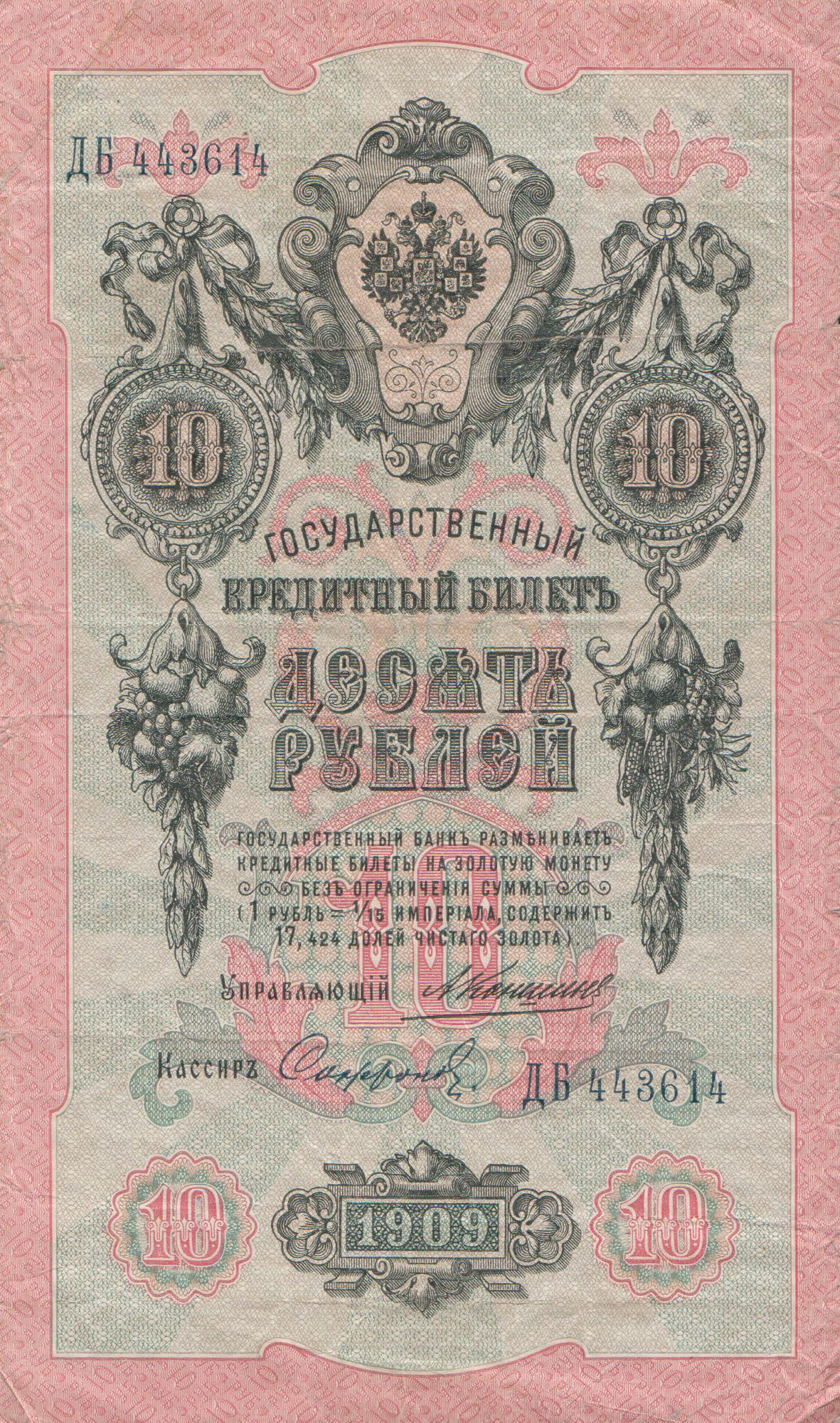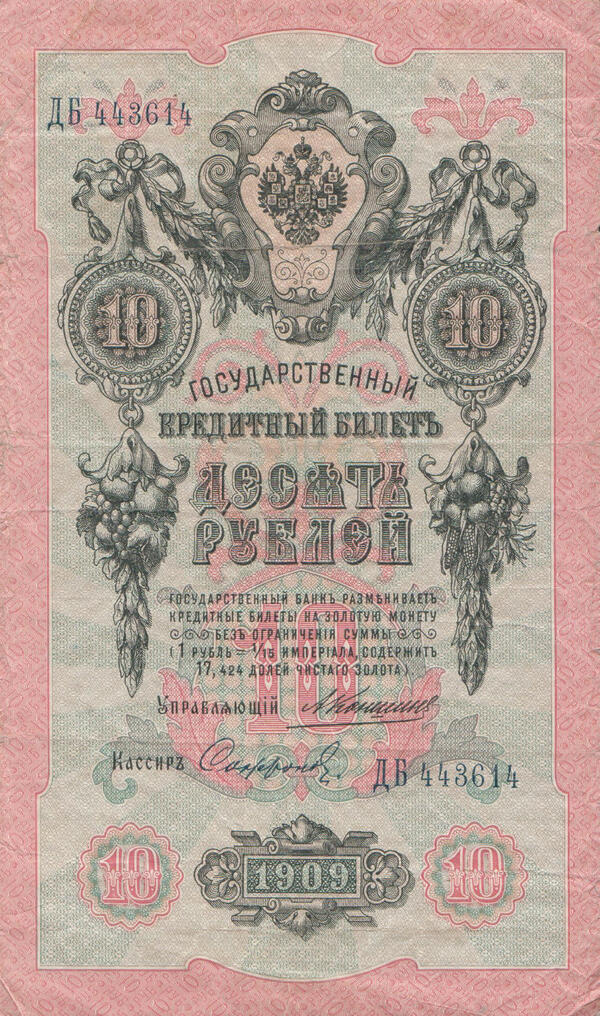Like other banknotes of the Russian Empire at the turn of the 20th century, the 1909 banknote of 10 rubles was printed using the Orlov printing technique. This method of printing money allowed several colors to be printed on the banknote in one run, which greatly improved the technique of money production. It was invented in the late 19th century by Ivan Ivanovich Orlov, who worked at the State Paper Procurement Expedition, and was subsequently used in producing both Russian Empire money and many securities.
Orlov’s report on the invention was warmly welcomed at the Imperial Russian Technical Society. Robert Emilievich Lenz, the manager of the State Paper Office, a prominent physicist and professor at the Technological Institute, highly appreciated Orlov’s achievement. He pointed out that many specialists who worked on the problem could not find a solution. Orlov was later awarded a substantial prize of 7,000 rubles for the invention — very big money at the time. It could be said that Orlov’s method, combined with the creativity of the artists who worked at the Expedition, helped to design a number of very unusual banknotes in the last decades of the Empire.
Orlov’s invention solved an old problem with printing and combining different colors which had been an issue in almost all European countries. It also made counterfeiting banknotes much more difficult. Orlov’s printing press underwent significant improvements even during the commissioning of its very first prototype. Struzhkov, a locksmith of the Expedition, made several important design additions and the master printer Shcherbakov introduced an improvement, which allowed for printing an additional print with one more color in one run on top of the multi-colored print.
The banknote on display was issued during the period when the Governor of the State Bank was a major financier, Aleksey Vladimirovich Konshin, as the signature indicates. This means that the banknote was issued before the February Revolution.
Ten rubles was quite a lot of money. Unskilled laborers or servants usually got 5–10 rubles for a month of work. But these occupations were among the lowest paid.
Orlov’s report on the invention was warmly welcomed at the Imperial Russian Technical Society. Robert Emilievich Lenz, the manager of the State Paper Office, a prominent physicist and professor at the Technological Institute, highly appreciated Orlov’s achievement. He pointed out that many specialists who worked on the problem could not find a solution. Orlov was later awarded a substantial prize of 7,000 rubles for the invention — very big money at the time. It could be said that Orlov’s method, combined with the creativity of the artists who worked at the Expedition, helped to design a number of very unusual banknotes in the last decades of the Empire.
Orlov’s invention solved an old problem with printing and combining different colors which had been an issue in almost all European countries. It also made counterfeiting banknotes much more difficult. Orlov’s printing press underwent significant improvements even during the commissioning of its very first prototype. Struzhkov, a locksmith of the Expedition, made several important design additions and the master printer Shcherbakov introduced an improvement, which allowed for printing an additional print with one more color in one run on top of the multi-colored print.
The banknote on display was issued during the period when the Governor of the State Bank was a major financier, Aleksey Vladimirovich Konshin, as the signature indicates. This means that the banknote was issued before the February Revolution.
Ten rubles was quite a lot of money. Unskilled laborers or servants usually got 5–10 rubles for a month of work. But these occupations were among the lowest paid.




